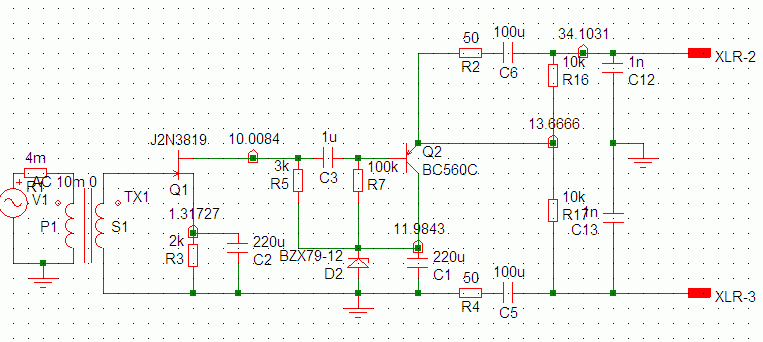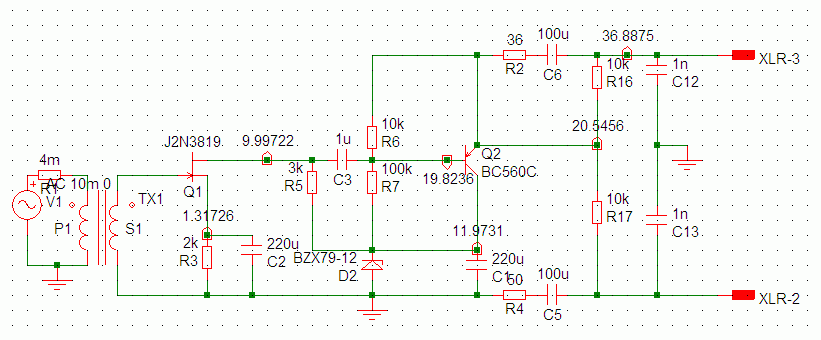Yes, it's noise + shell. German has "das Rauschen" = noise and "der Rausch" = intoxication. In word formation affixes can be lost, so "Rauschen" is clipped to "Rausch". Languages just do stuff without much logic. But you figured it out, nonetheless. So, yes, it's a mic test device. It acutally looks quite a bit like a bomb. I recently phoned with a guy who writes for another magazine. He's a measurement technician (Messtechniker) in real life. And of course he built his own "Rauschbombe" (among other, much weirder devices). So if I really get the time to build one myself, I guess I'll just call him :wink:
So I could acutally recuce R2 and R4 a bit? Some quite respected microphones are actually impedance balanced. The TLM 103, to name just one. The Oktava 012 preamp, too, is impedance balanced (for whatever reason using two different sized resistors of 51 and 39 ohms). Both seem to work just fine under real world conditions. So if there's nothing else wrong with my circuit, I guess it should work okay. Where's my soldering iron? :grin:
So I could acutally recuce R2 and R4 a bit? Some quite respected microphones are actually impedance balanced. The TLM 103, to name just one. The Oktava 012 preamp, too, is impedance balanced (for whatever reason using two different sized resistors of 51 and 39 ohms). Both seem to work just fine under real world conditions. So if there's nothing else wrong with my circuit, I guess it should work okay. Where's my soldering iron? :grin:






